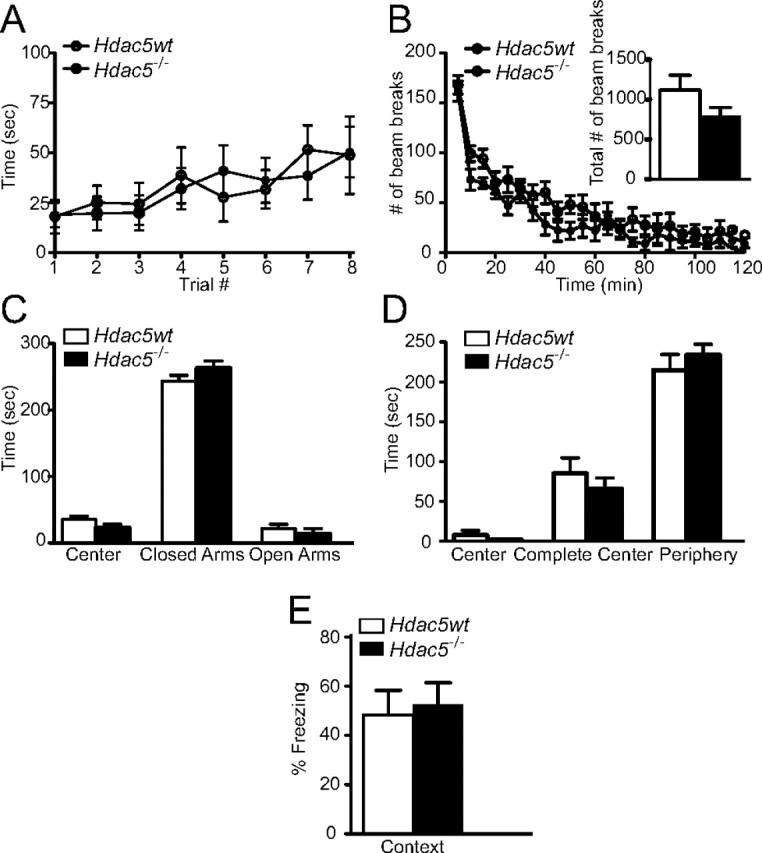Figure 3.

Hdac5−/− mice have normal behavior including memory formation. A, Hdac5−/− mice have normal motor coordination, staying on the rotarod as well as littermate Hdac5wt. The Hdac5−/− mice were indistinguishable from Hdac5wt mice in motor coordination as assessed by the rotarod test, as repeated measures with mixed-model analysis revealed no significant group effect (F(1,6) = 0.06; value of p = 0.8109). B, The Hdac5−/− mice were examined for alterations in total locomotor activity for 120 min, and using Student's t test analysis, there was no significant difference between Hdac5−/− and Hdac5wt mice. We also assessed ambulation in 5 min increments and, based on repeated measures with mixed-model analysis, found no significant group effect between Hdac5−/− and Hdac5wt mice (F(1,6) = 5.87; value of p = 0.0517), while there is a significant time effect (F(23,138) = 38.20; value of p < 0.0001). C, In the elevated plus maze test, Hdac5−/− mice show no significant difference in time spent in the center of the maze, closed arms, or open arms compared with Hdac5wt mice. D, In the open-field test, the Hdac5−/− mice spent a similar amount of time in the complete center and periphery compared with Hdac5wt mice. E, Hdac5−/− mice show normal context-dependent fear conditioning. The time spent freezing 24 h after training in a one-trial fear-conditioning paradigm was assessed. Results indicate no difference in fear memory in the Hdac5−/− mice compared with Hdac5wt mice (Hdac5−/−, n = 7; Hdac5wt, n = 8).
